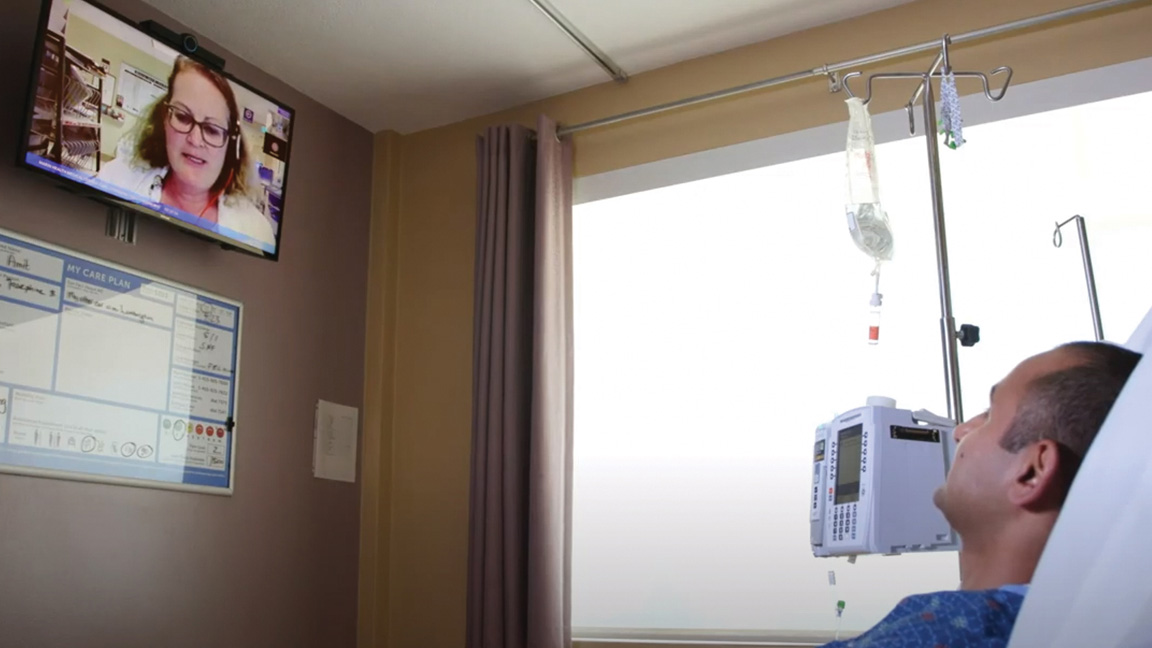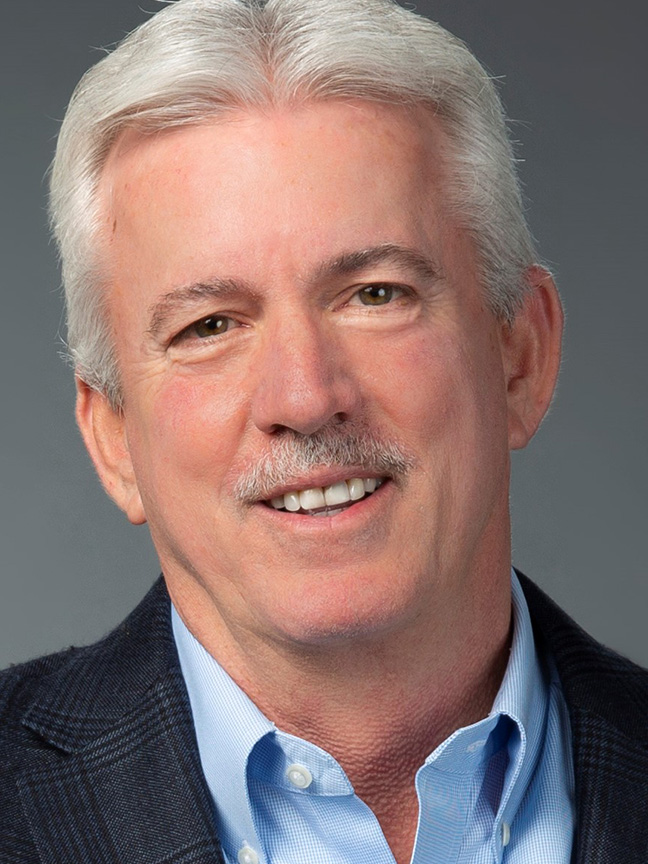Why It's Time for a Change for Integrators
Several Pro AV companies have not only survived but thrived after the pandemic.

This can clearly be stated: The pandemic has changed the AV industry forever. But in the eyes of many top integrators, those difficult changes may have been for the industry’s betterment in the long term. Working through these hardships has separated the integrators that previously were faking their way through the tough projects from the ones that focused on scalable, flexible efforts, allowing them to truly prosper in this post-pandemic environment.
“We all know that we’ve emerged from the pandemic a changed workforce in many ways, but perhaps the most predominant and lasting changes are related to our newfound agility,” said Michael Strand, chief revenue officer for Diversified. “We’ve had to pivot—and sometimes pivot again—in terms of how we deliver projects, how we engage our teams and even the solutions and services we offer.”

Traditionally, some integrators have over-relied on product offerings, struggling to find a balance between products and service offerings. “Those that just did a basic install, left, and never returned, really didn’t fare well during these times,” said Bill Lawrence, vice president of technical operations for Kinly. “The folks that were service deep are the ones that survived.”
Recurring Revenue
Clients are looking for integration partners able to deliver on all fronts, providing service offerings that are efficient and easy to standardize. This has caused integrators to view the client-integrator relationship as a true partnership, one that focuses on understanding critical functions while suggesting solutions that support real use cases. With that in mind, integrators are putting a stronger focus on recurring revenue streams through managed service offerings that allow integrators to bundle services for a fixed fee-per-month.

“We’ve been gaining traction, particularly with our corporate customers, by demonstrating how managed services reduce their cost of doing business and improve their bottom line,” said Jeff Davis, president and COO for Avidex. “For example, installing, implementing, and monitoring a turnkey ‘easy room’ solution within an AVaaS framework creates an intuitive and reliable user experience without upfront costs. Remote monitoring also frees up IT staff resources while providing insights into AV system utilization to increase user/meeting room efficiency. AVaaS also ensures, through periodic component upgrades, client AV systems do not become outdated.”
[SCN Top 50 Systems Integrators 2021]
With many clients looking to create a more engaging experience that would bring people back into offices, retail stores, etc., integrators have used this as an opportunity to expand within two important strategic growth areas: digital media and managed services. These services include on-site support, content creation, and creative services, all driving new forms of engagement for their client’s intended audience.
A daily selection of features, industry news, and analysis for AV/IT professionals. Sign up below.

Diversified has also introduced its new Global Payment Solutions as an additional revenue stream apart from products or support. “It’s all about financially positioning our clients so they can leverage the latest in technology without capital expenditures,” Strand explained. “With this outcome-based technology financing model, we’re meeting our clients where they are in terms of how they want to procure on an as a service model.”
Integrators have also expanded pandemic-related technology offerings, including virtual patient care and temperature-scanning kiosks, as hospitals have turned into an area of considerable growth for integrators. The pandemic has accelerated the adoption for virtual patient care, and the demand is high for AV communication systems that better support patients. “The ability for nurses and doctors to videoconference with highly contagious hospital patients increases workflow efficiencies while helping patients feel less isolated,” said Davis.
[NSCA Releases Updated Compensation & Benefits Report for Integrators]
Higher education, with students participating in remote learning at higher rates, offers another growth vertical. Campuses have large numbers of meeting rooms and classrooms in need of unified AV platforms, giving integrators the opportunity to not only integrate the technology but provide long-term service packages that support these spaces for years to come.
Addressing the Supply Chain
As backlogs due to supply chain issues continues to grow, planning and project management has become more critical than ever for integrators. Timelines are extending—and that leads to many uncomfortable conversations between integrators and clients, which many integrators say they are having on a daily basis. This has caused integrators to better educate the main point of contact for clients, their sales team.
A lot of companies are saying the old way of doing it was ‘best of class,’ but there is a ‘good enough’ movement that is working its way into the corporate enterprise.
Jack Steinhauer, Kinly
“They have almost become more like educators and have to understand the nuances of the supply chain and how it impacts our clients,” said Lawrence. “These are much more difficult conversations to have, and we need to offer solutions that will help them in the long run.”
Clients have also grown accustomed to on-demand product updates, like those they receive when e-shopping. That has led to a balancing act of obtaining the information from manufacturers, interpreting that information, and sharing it with the client.

As clients grow tired of the long waits for their ideal solution, an openness is beginning to appear for system architecture based on the continued supply chain issues. With clients willing to accept options that may not be perfect in their eyes, integrators are guiding them through solutions that meet their use case and are available now. “A lot of companies are saying the old way of doing it was ‘best of class,’ but there is a ‘good enough’ movement that is working its way into the corporate enterprise,” noted Jack Steinhauer, Kinly’s senior vice president and head of sales and marketing, Americas.
New Work Models
Like many industries, integrators adapted to working remotely during the pandemic, and many have fully embraced the benefits of hybrid work. The new reliance on hybrid work has allowed integrators to recruit the best talent, no matter their geographical location, and focus on building internal structures that provide the appropriate resources for employees to prosper within this new working environment.
[Viewpoint: The Future is Repeatable, Dependable AV]
Talent is currently in high-demand, and integrators have been navigating challenges surrounding labor costs and hiring. During this era, known as the Great Resignation, many people have left their positions, requiring integrators to focus on talent retention strategies and develop cultures based around supporting employees and their development.

Technician availability has been another hurdle many integrators have had to navigate. “Definitely having a lot more integrators reaching out to us and the issue is staffing,” said John Day, founder of AV HERO, an on-demand service provider focusing on connecting talented AV technicians with integrators and other businesses in need of their help. With many technicians joining the gig economy and not looking to work for just one company, integrators turn to AV HERO to hire technicians in various locations across the country, helping them to properly address their project needs and save on costly overhead costs like travel.

“In a time when workers are hard to find and travel costs have increased or are limited, AV Hero has been able to provide a quicker solution to the service needs of our clients, minimizing downtime and eliminating the high cost of travel,” said Jeremy Blanton, design consultant with Conference Technologies, an integrator that has utilized AV HERO to address their staffing needs. Day feels that there is a great chance the labor force may become an on-demand service long-term—for integrators and manufacturers—with technicians enjoying their independence and deciding what jobs to take based on their own terms.
Jennifer is a freelance writer and marketing consultant based in the New York City area. Within the AV industry, Jennifer loves to explore how technology can alter the world around us, creating immersive experiences unlike any other. She has years of experience working with AV integrators, manufacturers, and event production companies in developing engaging content to increase their overall awareness.

